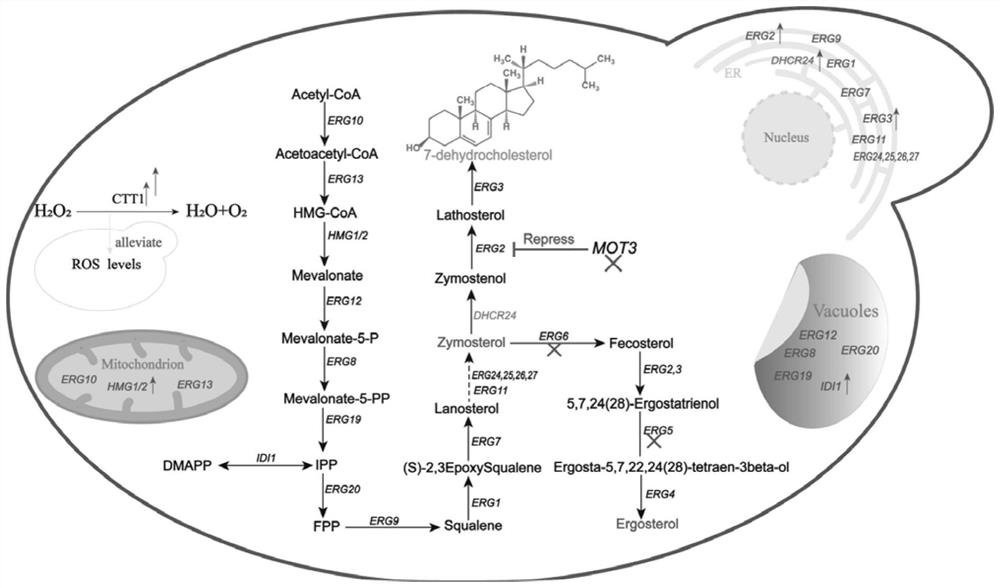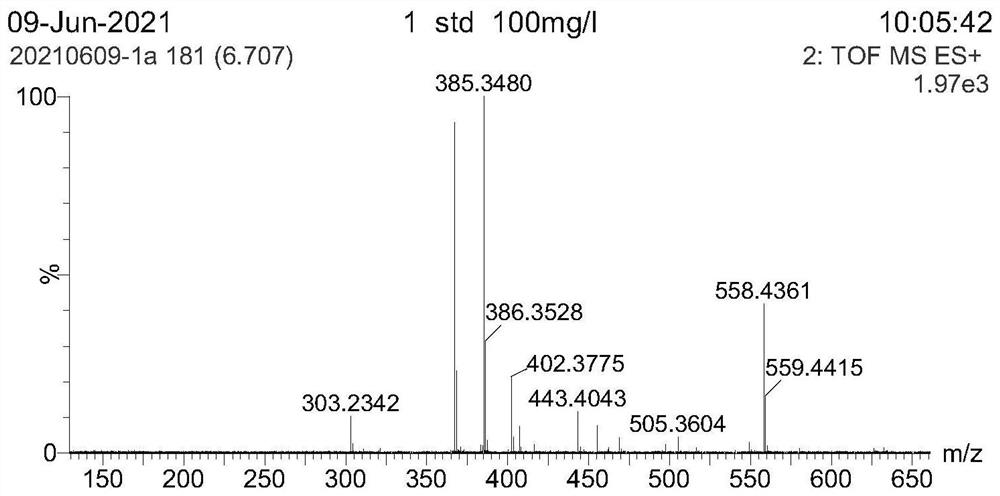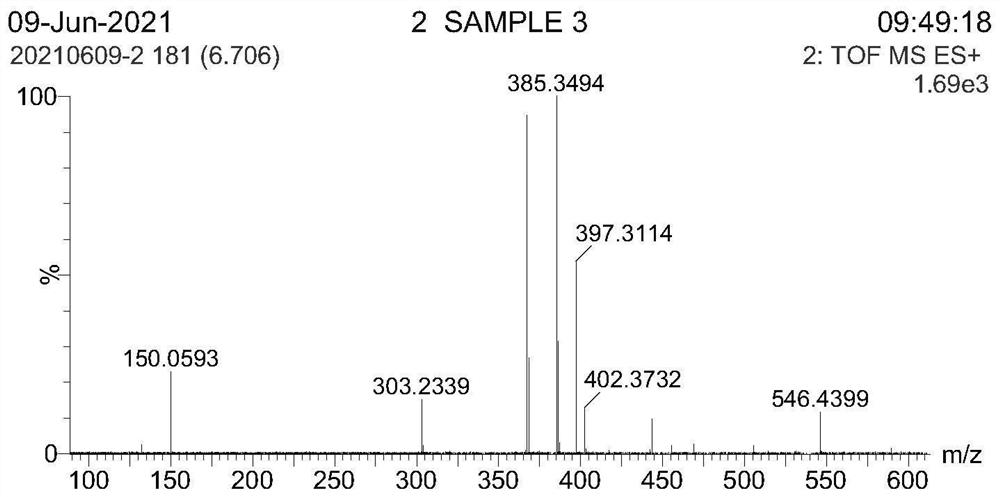Recombinant yeast engineering strain for producing 7-dehydrocholesterol and application
A technology of dehydrocholesterol and engineering bacteria, applied in the field of genetic engineering and bioengineering, can solve the problems of high price and low productivity
- Summary
- Abstract
- Description
- Claims
- Application Information
AI Technical Summary
Problems solved by technology
Method used
Image
Examples
Embodiment 1
[0052] Example 1 Construction of a recombinant Saccharomyces cerevisiae strain producing 7-dehydrocholesterol
[0053] Select ERG5 and ERG6 of Saccharomyces cerevisiae CENPK2-1D as the integration site of δ(24)-sterol reductase gene DHCR24, and use primers TEF1p-F / TEF1p-R to amplify promoter P TEF1 , the primer TEF1t-F / TEF1t-R amplifies the terminator T TEF1 , using primers DHCR24-F / DHCR24-R to amplify the gene DHCR24 shown in SEQ ID NO.1, using primers ERG5 / 6-armup-F / ERG5 / 6-armup-R and ERG5 / 6-armdown-F / ERG5 / 6-armdown-R to amplify the upstream and downstream homology arms of ERG5 / 6 sites respectively, and use fusion PCR to connect the homology arms and DHCR24 gene into a fragment named DHCR24-1. Using primers 4-1-ERG5-PAM-1-F / 4-1-ERG5-PAM-1-R, 4-2-ERG5-PAM-2-F / 4-2-ERG5-PAM-2-R, 4-3-ERG6-PAM-1-F / 4-3-ERG6-PAM-1-R, 4-4-ERG6-PAM-2-F / 1-4-R, refer to "CRISPR-Cas9 System: Application One-step multi-target gene editing technology in Saccharomyces cerevisiae "Construct ERG5, ERG6 g...
Embodiment 2
[0054] Example 2 Knockout of inhibitory genes in 7-dehydrocholesterol synthesis pathway
[0055] On the basis of the strain 7-DHC-1 constructed in Example 1, the endogenous gene MOT3 of Saccharomyces cerevisiae was knocked out, and the single-copy expression cassettes of the endogenous genes ERG2 and ERG3 of Saccharomyces cerevisiae were integrated at this site to relieve the path of ERG2 and so on. The expression of ERG2 and ERG3 was enhanced while the gene expression was restricted. Amplify promoter P using primers PGK1p-F / PGK1p-R PGK1 , primers TDH3p-F / TDH3p-R amplify promoter P TDH3 , the primer TEF1t-F / TEF1t-R amplifies the terminator T TEF1 , using the primers ERG2-F / ERG2-R to amplify the gene ERG2, using the primers ERG3-F / ERG3-R to amplify the gene ERG3, using the primers MOT3-armup-F / MOT3-armup-R and MOT3-armdown-F / MOT3-armdown-R respectively amplified the upstream and downstream homology arms of the MOT3 site. The PCR products were recovered by ethanol precipita...
Embodiment 3
[0056] Example 3: Knockout of NEM1, a gene involved in lipid metabolism
[0057] On the basis of the strain 7-DHC-2 constructed in Example 2, the endogenous gene NEM1 of Saccharomyces cerevisiae was knocked out, and NEM1-armup-F / NEM1-armup-R and NEM1-armdown-F / NEM1-armdown-R were used to expand the Add the upstream and downstream homology arms of the NEM1 site. The PCR product was recovered by ethanol precipitation, and the homology arms were fused by fusion PCR to obtain a gene knockout integration fragment named fragment NEM1-1. The 20nt of NEM1 is cgacgttatggtgaactctg, cgacgttatggtgaactctg. Use primers 7-3-NEM1-PAM-1-F / 7-3-NEM1-PAM-1-R, 7-4-NEM1-PAM-2-F / 1-4-R to obtain gene knockout plasmid 7- 3-3. The knockout plasmid 7-3-3 and the fragment NEM1-1 were efficiently transformed into the strain 7-DHC-2 constructed in Example 2 to obtain the strain 7-DHC-3 in which the gene NEM1 was knocked out. Methods Shake flask fermentation was carried out. The results showed that the ...
PUM
 Login to View More
Login to View More Abstract
Description
Claims
Application Information
 Login to View More
Login to View More - R&D
- Intellectual Property
- Life Sciences
- Materials
- Tech Scout
- Unparalleled Data Quality
- Higher Quality Content
- 60% Fewer Hallucinations
Browse by: Latest US Patents, China's latest patents, Technical Efficacy Thesaurus, Application Domain, Technology Topic, Popular Technical Reports.
© 2025 PatSnap. All rights reserved.Legal|Privacy policy|Modern Slavery Act Transparency Statement|Sitemap|About US| Contact US: help@patsnap.com



